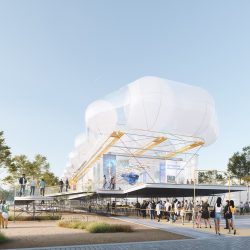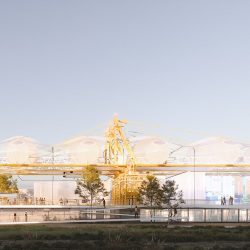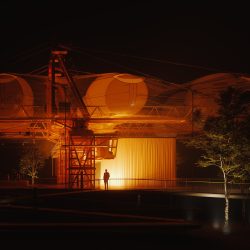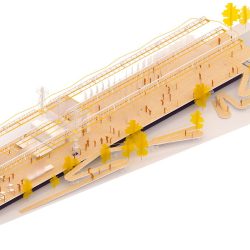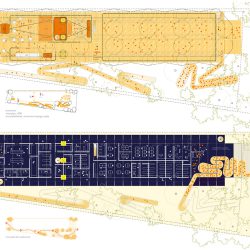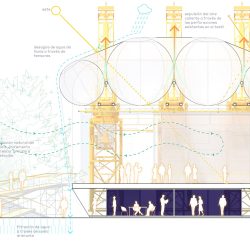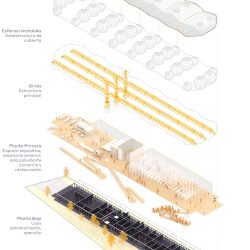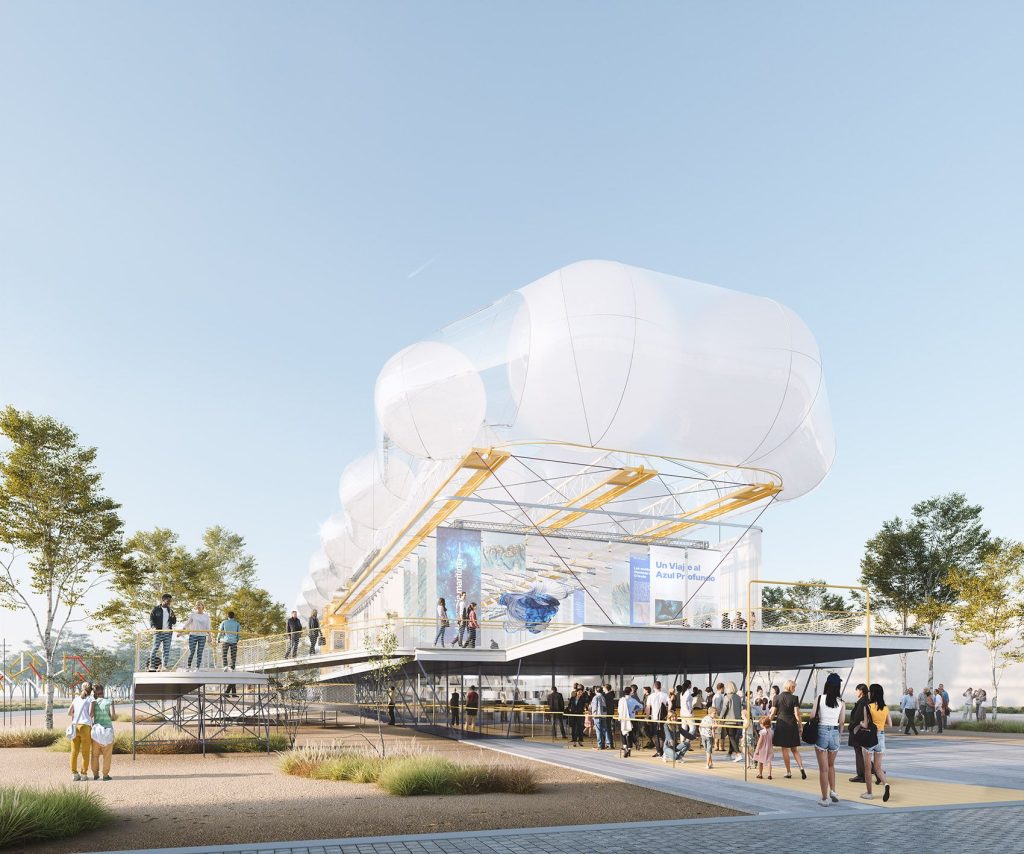
This Spanish pavilion at the Expo Osaka 2025 is based on the early understanding, which we arrived at very quickly through the study of various possible options, that it was practically unfeasible and very complex to manufacture and build anything in Japan, especially in Osaka, in the vicinity of the Universal Exposition. Therefore, the entire project is based on the idea of manufacturing as much as possible in Spain, at a much more affordable price, and then transporting it all there to be assembled in a few weeks.
This strategy begins with the creation of a base of prefabricated modules with dimensions of forty-foot containers to be transported by ship to the port of Osaka, specifically to the Container Terminal on Yumeshima Island, which is very close to the Expo site. Inside these container modules, we will carry all the equipment and materials necessary to set up the exhibitions and shows in the pavilion.
Once assembled, the thirty modules will also house all the enclosed spaces of the building, including entrances, offices, VIP rooms, operational areas, kitchens, warehouses, dressing rooms, restrooms, a restaurant, and a tapas bar, with a total dimension of 1070m2.

The large platform is located 3 meters above the ground and will be the epicenter of the entire pavilion. The average temperature in Osaka between April and October ranges from 17 to 32 degrees Celsius. Therefore, the idea is to make this platform visible and open to all Expo visitors, only closing it when necessary with transparent curtains to protect against wind and side rain. This 1800m2 stage can be enjoyed and viewed from all areas, positioning itself as the main gathering plaza of the Expo, the Plaza de España, the public place where everyone will want to enter to appreciate and enjoy it.
The roof of this plaza is divided into 2 parts and will also be prefabricated in Spain and packaged within some of the modules. The first part consists of 32 inflatable spheres of 2 sizes: 6 and 4 meters in diameter. These spheres will be inflated, positioned, and fixed on the tower cranes. Once anchored, the large fabric that rests on the spheres and protects the pavilion from the sun and rain will be deployed. This fabric is attached with cables to the cranes and the modules on the ground and is manufactured with a transparent area on the east-north side, while the rest, 85% of its surface, is more translucent-opaque.
At the end of Expo 2025 in Osaka, the containers will be sealed again and sent to a location chosen by an institutional alliance between ACE, the Expo, and AECID to be reused and converted into, for example, a school (with all the necessary equipment included), or any other purpose that the alliance deems suitable for strategic and social reasons.
_

